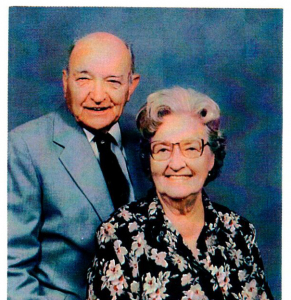Influence of Natives - Part IIPosted on November 17, 2018 |
REMEMBERING CLAY
Clay Settlers-Influence of Natives (Part II)
For the 100 years from the time the Palatines landed on Nutten’s Island until their descendants migrated to Clay, they faced many challenges. Johann Conrad Weiser remarried and had eight more children. His son Conrad, from his first wife, grew rebellious longing for knowledge. He added English to his German, then French and Latin. His father turned him over to chief Qua y nant to learn Mohawk language and ways. He would act as an interpreter between his people and the Iroquois.
The Palatines had trouble trading their crops in Albany for life’s necessities. Hunter continued to arrest them for settling in Schoharie, forcing them to pay tax. Eventually many moved to Pennsylvania, to Mohawk settlements at German Flats and Stone Arabia and westward to Ohio. The conflicts between Indian tribes, French and English led to the French and Indian War. Weiser, because of his vast knowledge of language and Iroquoian dialects, had tried to keep the peace but he felt more at home with his Mohawk brothers than his European family. After the War ended, the settlements were fully-naturalized and the settlers were thankful to the Crown. However, many more remembering the violence and corruption they had endured, chose to support the emerging party of equality and opportunity.
The involvement of the Potential Americans and the various tribes and nations of the Haudenosaunee (Iroquois) in the Revolutionary War is a complicated story of which many books have been written, but we will progress to the events at its termination. When the new American Government took possession of the land from the Natives, it was open to new settlement. The colonists could travel by way of the Hudson River, then west along the Mohawk River. The Indian trail west along the south side of Oneida Lake, now Route 31, lead them right to our area. . A major group that settled in Clay was the Young family of eight siblings. Their Father, Jeremiah stayed in Schoharie. They were all descendants of Hans Jerg Jung (Young) who died in Germany and shortly afterward his wife came to America with the mass migration of Palatines in 1810.
Jeremiah’s children who settled here in 1810 were: Peter, who married Mary Brown; Christian I. who married Lana Becker; and John J. who married Lana Carncross. In 1812 a fourth son, Jacob I. came to Clay and was married to Isabella McNaughton. A fifth son, Abraham I., came to Clay in 1820 and was married to Christina Ottman. It is not clear when they arrived but the three sisters married as followed: Anna to Andrew Becker; Mary to Robert Weller; and Helena to Jared Mogg. They settled initially in Caughdenoy because of the nearness of water. The other northern land that jutted two-thirds in the water was Horseshoe Island, famous hunting and fishing grounds for the local Onondaga Indians. The natives would skin and bone their catches and smoke them, throwing the bones in a pile to be washed down river in the spring flood. Caughdenoy was well-known for the weirs for catching eels that swam all the way from across the Atlantic swimming up the Hudson River, Mohawk River and Oneida Riversto spawn. The natives used tree branches to form a triangle with a small opening at the end to let the eels through and catch them in nets to be smoked. The colonists copied this method using wire fencing instead. The settlers were also influenced by the crops grown in this area by the natives – corn, beans and squash.
Hiawatha Lodge, a beautiful completely refurbished home is still standing today. It was greatly influenced by the natives and the natives by it. A former owner, Joseph Griffin, was saved from drowning by an Indian lad in 1870 and established a life-long friendship with the Onondaga Nation when he was adopted by them in 1890 and given the name Scho-nah-na-da (Hiawatha the Second). All Indians were welcomed in his beautiful home, which then became Hiawatha Lodge. Rumor has it that the natives also loved to play with Griffin’s little son who always wore a red coat which they loved. They would also camp around on his grounds.
Along with Caughdenoy and Horseshoe island, at Three Rivers and oak Orchard Indian artifacts are still found. Oak Orchard was an Indian Burial Ground and Three Rivers was where the six Nations of the Haudenosaunee met.
Dorothy Heller, Historian
Other
Remember Clay Stories
Hiram Sharp - Part VI
Remembering Clay | Aug 20, 2014
Hiram Sharp - Part VI - American Patriot in the Australian Colonies*

